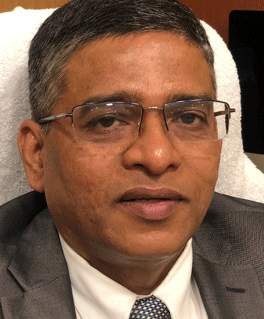Bhubaneswar : Odisha Government has informed the Centre that 160 Session Sites have been identified in 30 Districts for launching of COVID-19 Vaccination.
ACS Health & Family Welfare, P K Mohapatra informed the Union Ministry of Health & Family Welfare (MoHFW) today which held a VC with ACS, Principal Secretaries of the State Governments.
Out of total Session Sites, highest 10 is in Mayurbhanj, followed by 08 each in Cuttack and Puri, 07 each in Kalahandi and Rayagada, 06 each in Kendrapara, Keonjhar and Sundargarh District.
While 05 each in Balasore, Jajpur, Kandhamal, Khordha, Koraput, Sambalpur and Bhubaneswar Muncipal Corporation.
Similarly 04 each in Bargarh, Dhenkanal, Gajapati, Jharsuguda, Nabarangpur and Nayagarh District.
There will be 03 Session sites in Balangir, Bhadrakh, Boudh, Malkangiri, Nuapada, Berhampur Muncipal Corporation and Cuttack Municipal Corporation area. 02 each Session sites in Angul, Deogarh, Sonepur, Rourkela and Sambalpur Muncipal Corporation areas.
While Union Government in Ministry of Health & Family Welfare has been proactively carrying activities towards preparing for the nationwide roll-out of COVID-19 vaccine in close collaboration with States and all stakeholders, Odisha Government is also taking up Vaccination in big way.
The meeting was chaired by Ram Sewak Sharma, Chairman of Empowered Group on Technology and Data Management to combat COVID-19 and member, National Expert Group on Vaccine Administration of COVID-19.
The meeting was attended by the State Principal Secretaries, NHM Mission Directors, and State Immunization officers and senior officers of the Health Ministry. During the meeting the feedback of the States/UTs on the Co-WIN software and its operational use, emanating from the dry runs, was discussed in detail.
Mr.Sharma gave an overall view of the Co-WIN software and the principles that shall underpin the technology back-up for the vaccination exercise. He said that robust, dependable and agile technology shall form both the foundation and the back-up for the country’s COVID-19 vaccination which shall be the world’s largest immunization exercise.
This is an unprecedented scale of immunization, he pointed out. Addressing the participants, he stated that the process should be citizen-centric, and built on the approach that the vaccine shall be available anytime and anywhere.
He stressed on the need to be flexible without compromising on quality. He reiterated that the inclusivity, speed and scalability have been kept in mind while designing the unique digital platform with all components being portable, synchronous without excessive and unnecessary dependencies.
The EG Chairperson underscored the critical importance of capturing the vaccination data in real time, stating that this was non-negotiable; while the posting of data on the portal may be online or offline in view of connectivity issues being highlighted by few states.
He also critically highlighted the caution one needs to exercise to ensure that there are ‘no proxies’ at all; the beneficiaries need to be uniquely and undeniably identified, he strongly reiterated. Speaking on the use of Aadhar platform, he advised the States to urge the beneficiaries to seed their current mobile number with Aadhar for registration and consequent communication through SMS; there cannot be any proxies for Aadhar authentication.
He pointed out that it is extremely important to clearly identify person who is getting vaccinated and keep a digital record on who gets vaccinated by whom, when and which vaccine. He also advised the States and UTs that the data collection should meet the purpose of facilitating work and that needs to be validated at the field levels.
There was a detailed and comprehensive discussion on the experience of the States. Their feedback and the consequent changes in software/protocols based on those inputs were deliberated upon.
These included issues such as: Session allocation/planning/time slotting; Work flow allocation; Vaccinator’s allocation; Sending SMS to vaccinators and beneficiaries; and connectivity issues.


